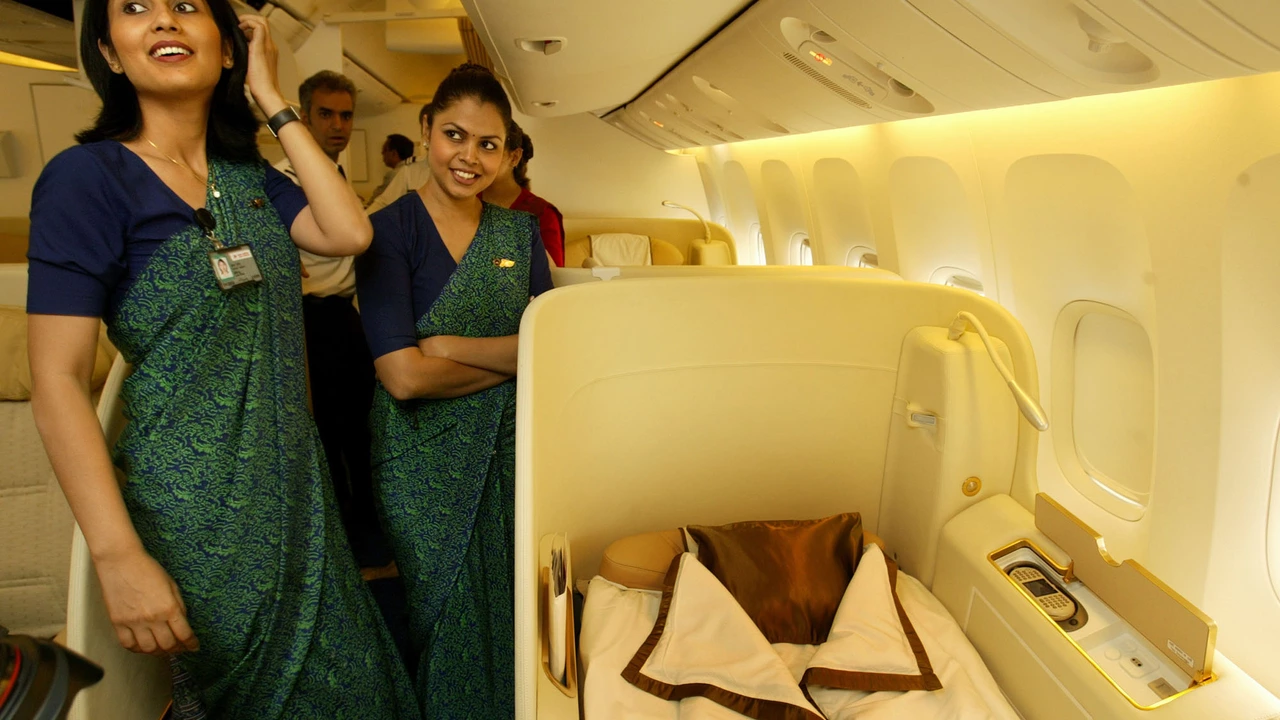Understanding the Globe
When we look at a globe, we can see that India and the USA are placed on opposite sides. It may seem logical to assume that you could simply fly east from India to reach the USA. However, this is not the case in reality. The reason for this is related to the Earth's shape and the way it rotates. The Earth is not a perfect sphere but an oblate spheroid, which means it is wider at the equator than it is at the poles.
Moreover, the Earth rotates on its axis from west to east. This rotation affects the direction and paths that airplanes follow. As a result, the quickest route from one location to another on the Earth's surface is not a straight line on the map, but rather, a path that follows the curve of the Earth. This path is known as a great circle route.
The Great Circle Route
The great circle route is the shortest distance between two points on the surface of a sphere. When it comes to air travel, planes generally follow the great circle route as it helps in reducing travel time and fuel consumption. This route is not a straight line on a map because maps are two-dimensional representations of the three-dimensional Earth.
When you look at a map, flying eastward from India to the USA might seem like the shorter route. However, if you take into account the Earth's curvature, you'll see that the great circle route from India to the USA actually involves flying northward over the North Pole and then southward towards the USA.
Impact of the Jet Stream
The jet stream also plays a crucial role in determining flight routes. The jet stream is a band of strong winds that blow from west to east in the upper levels of the atmosphere. These winds can reach speeds of up to 250 mph and can significantly affect the speed and fuel efficiency of flights.
Flying with the jet stream can greatly reduce travel time and fuel consumption. Hence, flights from India to the USA often fly over the North Atlantic where the jet stream is most powerful. This is another reason why flights don't simply fly eastward from India to the USA.
Flight Regulations and Air Traffic
Flight regulations and air traffic also influence the direction of flights. Planes must follow specific air routes known as airways, which are like highways in the sky. These airways are designed to ensure safe and efficient air travel.
On these airways, there are specific points known as waypoints. Airplanes must pass over these waypoints, which often results in flights following a somewhat indirect path. Moreover, air traffic can also affect the direction of flights. For example, if there is heavy air traffic in a certain direction, a flight might be rerouted to avoid congestion.
Time Zones and Daylight Saving Time
Time zones and Daylight Saving Time can also affect flight schedules and routes. When flying westward from India to the USA, you are essentially going back in time due to the time zone differences. This can be beneficial for both passengers and airlines as it allows for more flexible scheduling.
Daylight Saving Time, which is observed in the USA but not in India, can also affect flight schedules. During Daylight Saving Time, clocks in the USA are set one hour ahead. This means that flights from India to the USA might have to be adjusted accordingly.
Weather Conditions
Weather conditions are another factor that determines flight routes. Severe weather conditions such as storms and turbulence can significantly impact flight safety and efficiency. Hence, airplanes often have to adjust their routes to avoid such conditions.
For example, the Pacific Ocean is known for its typhoons, especially during the typhoon season. Therefore, flying eastward from India to the USA over the Pacific might not be the safest or most efficient route, especially during this period.
Technological Limitations
Technological limitations also play a role in determining flight routes. For example, most commercial airplanes are not designed to fly over the poles. The extreme cold and the lack of navigation aids in these regions can pose significant challenges.
Moreover, airplanes need to stay within a certain distance from airports where they can land in case of emergencies. This is known as ETOPS (Extended-range Twin-engine Operational Performance Standards) regulations. Due to these regulations, airplanes often have to follow certain routes that keep them within range of suitable airports.
Conclusion: Why We Don't Fly East from India to USA
So, the reasons we don't fly east from India to USA are multifaceted. They range from the globe's shape and rotation, to the influence of the jet stream, air traffic regulations, time zones, weather conditions, and technological limitations. All these factors combine to determine the most efficient, safe and feasible flight path. When all these factors are taken into account, the seemingly indirect route over the North Atlantic turns out to be the most sensible choice.
